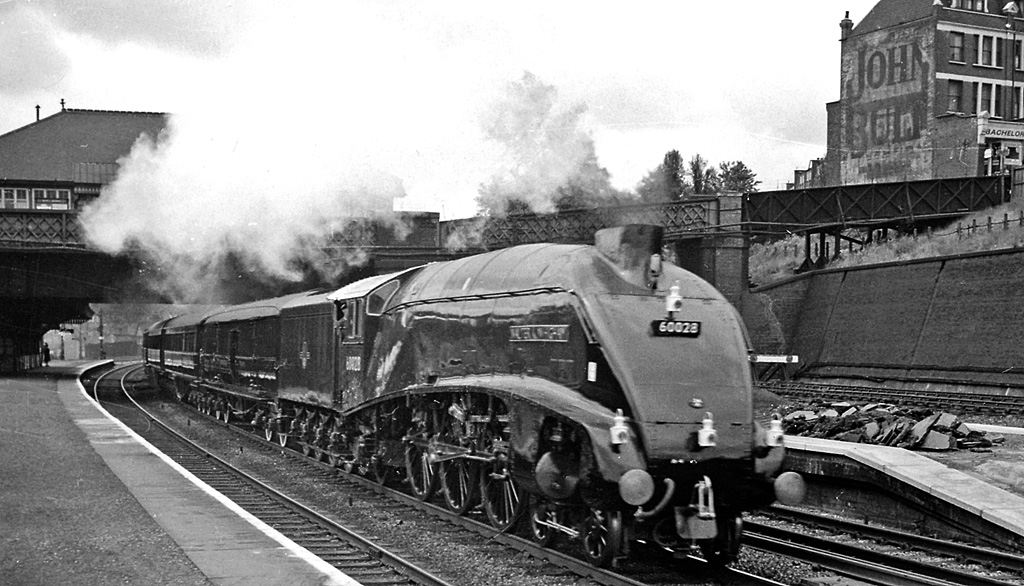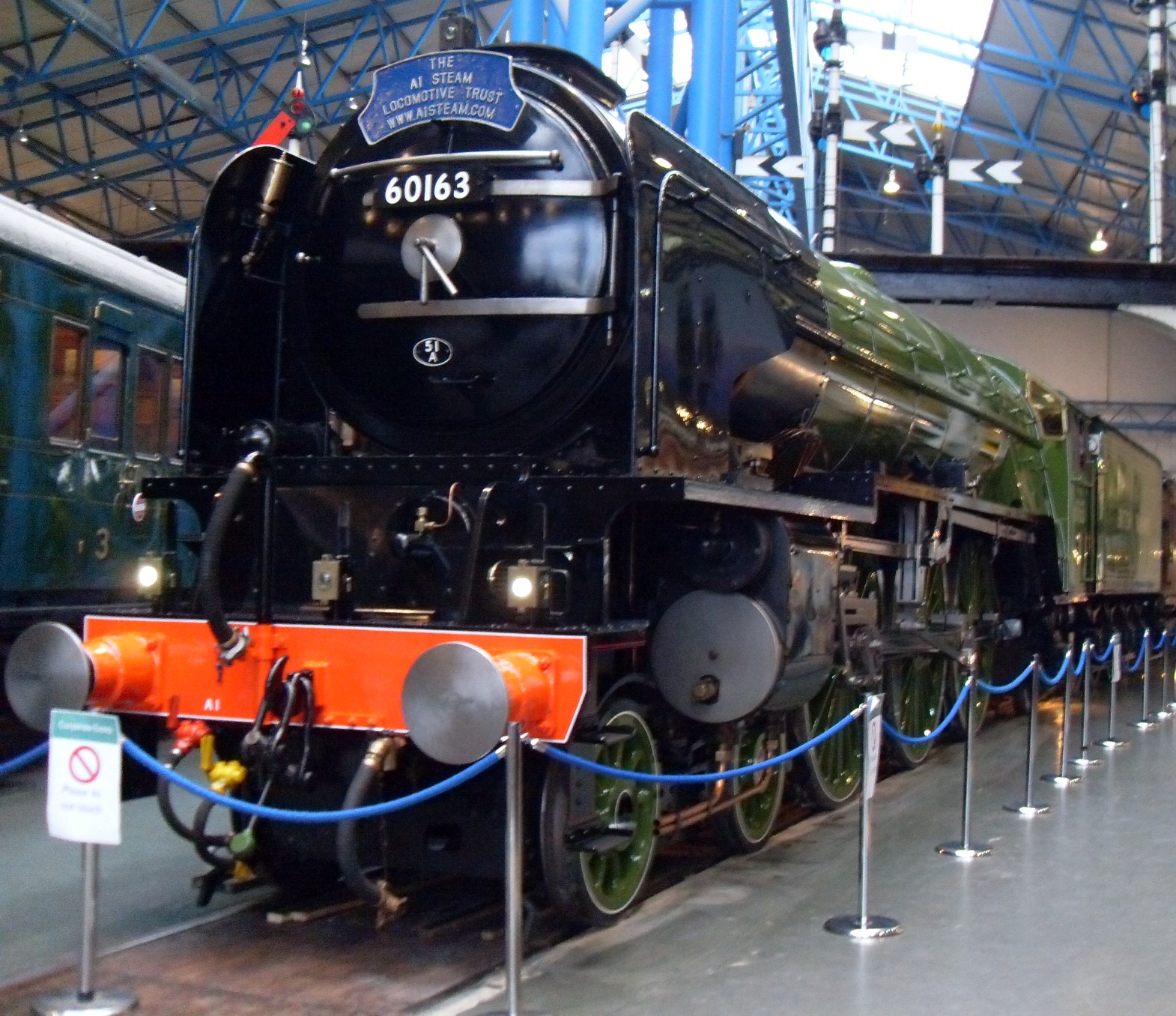LNER Pacifics on:
[Wikipedia]
[Google]
[Amazon]
The



 In 1923, the LNER inherited four pacifics, to two classes each consisting of two locomotives, one class from either of two of its constituents, the Great Northern Railway (GNR) and the North Eastern Railway (NER). The Great Northern Pacifics, were of GNR Class A1, designed by
In 1923, the LNER inherited four pacifics, to two classes each consisting of two locomotives, one class from either of two of its constituents, the Great Northern Railway (GNR) and the North Eastern Railway (NER). The Great Northern Pacifics, were of GNR Class A1, designed by
 {{main, LNER Peppercorn Class A1 60163 Tornado
In addition to the preserved engines above, a new build Peppercorn Class A1, 60163 ''Tornado'' was completed in August 2008.
{{main, LNER Peppercorn Class A1 60163 Tornado
In addition to the preserved engines above, a new build Peppercorn Class A1, 60163 ''Tornado'' was completed in August 2008.
LNER Encyclopedia
A* 4-6-2 locomotives
London and North Eastern Railway
The London and North Eastern Railway (LNER) was the second largest (after London, Midland and Scottish Railway, LMS) of the "Big Four (British railway companies), Big Four" railway companies created by the Railways Act 1921 in Britain. It ope ...
(LNER) operated various classes steam locomotives with a 4-6-2
Under the Whyte notation for the classification of steam locomotives, represents the wheel arrangement of four leading wheels on two axles, six powered and coupled driving wheels on three axles and two trailing wheels on one axle. The locomoti ...
(or Pacific) wheel arrangement
In rail transport, a wheel arrangement or wheel configuration is a system of classifying the way in which wheels are distributed under a locomotive. Several notations exist to describe the wheel assemblies of a locomotive by type, position, and c ...
. They had more Pacifics than any other of the Big Four British railway companies
The "Big Four" was a name used to describe the four largest railway companies in the United Kingdom in the period 1923–1947. The name was coined by ''The Railway Magazine'' in its issue of February 1923: "The Big Four of the New Railway Era".
...
and were mostly used for express passenger work along the East Coast Main Line
The East Coast Main Line (ECML) is a electrified railway between its northern terminus at and southern terminus at . The key towns and cities of , , , , and are on the line. The line is a key transport artery on the eastern side of Grea ...
, though later many were displaced to other lines.
Overview



 In 1923, the LNER inherited four pacifics, to two classes each consisting of two locomotives, one class from either of two of its constituents, the Great Northern Railway (GNR) and the North Eastern Railway (NER). The Great Northern Pacifics, were of GNR Class A1, designed by
In 1923, the LNER inherited four pacifics, to two classes each consisting of two locomotives, one class from either of two of its constituents, the Great Northern Railway (GNR) and the North Eastern Railway (NER). The Great Northern Pacifics, were of GNR Class A1, designed by Nigel Gresley
Sir Herbert Nigel Gresley (19 June 1876 – 5 April 1941) was a British railway engineer. He was one of Britain's most famous steam locomotive engineers, who rose to become Chief Mechanical Engineer (CME) of the London and North Eastern Rail ...
and numbered 1470/1. The NER had completed two Pacifics, Nos 2400/1, designed by Vincent Raven
Sir Vincent Litchfield Raven, Knight Commander of the Order of the British Empire, KBE (3 December 1859 – 14 February 1934) was an English railway engineer, and was chief mechanical engineer of the North Eastern Railway (UK), North Eastern Rai ...
. The LNER adopted the GNR classification system by wheel arrangement, with the A-prefix indicating the most prestigious wheel arrangement. The GNR Class A1s remained Class A1 and the NER Pacifics were reclassified A2.
The LNER also used Pacific tank engines, initially classified A5-7 and were eventually joined by a class A8. However because of their different lineage and operational use, they are not further considered here.
The LNER completed an additional three A2s in 1924. In 1929 2404 ''City of Ripon'' was fitted with a modified A1 boiler, but otherwise the A2s bore little resemblance to the remaining LNER Pacifics which were the continued evolution of the same basic Gresley design. The Raven Class A2s were all withdrawn in 1936/7, freeing the A2 designation for later reuse.
Comparisons between the A1 and A2s showed the former to be superior, thus they were selected for more building. A total of 52 A1s were eventually built. From 1928, the A1s started being fitted with higher-pressure superheated boilers. This reboilering turned them into Class A3, and eventually all but one A1 would be rebuilt to A3s up to 1948. In addition, 27 new A3s (Nos 2743-2752, 2595-2599, 2500-2508, 2795-2797) were built.
In 1929 a single experimental Class W1 water-tube boiler
A high pressure watertube boiler (also spelled water-tube and water tube) is a type of boiler in which water circulates in tubes heated externally by fire. Fuel is burned inside the furnace, creating hot gas which boils water in the steam-generat ...
locomotive was constructed. The W1 was rebuilt in 1936 with a more conventional fire-tube boiler
A fire-tube boiler is a type of boiler invented in 1828 by Marc Seguin, in which hot gases pass from a fire through one or more tubes running through a sealed container of water. The heat of the gases is transferred through the walls of the tube ...
, retaining its W1 classification. Although not technically a Pacific but a 4-6-4
, under the Whyte notation for the classification of locomotives, represents the wheel arrangement of four leading wheels, six powered and coupled driving wheels and four trailing wheels. In France where the type was first used, it is known as ...
"Baltic", there were many engineering similarities and operationally it shared similar duties.
The next class to be introduced was the Class A4
The LNER Class A4 is a class of streamlined 4-6-2 steam locomotives designed by Nigel Gresley for the London and North Eastern Railway in 1935. Their streamlined design gave them high-speed capability as well as making them instantly recognisabl ...
in 1935. A total of 35 were built with large streamlined casing. One of these A4s, 4469 Sir Ralph Wedgwood was destroyed during the Baedeker raids
The Baedeker Blitz or Baedeker raids was a series of bombing raids by the ''Luftwaffe'' on the United Kingdom during World War II in April and May 1942. Towns and cities in England were targeted for their cultural value as part of a demoralisa ...
of World War II.
Post-war, the initially straightforward classification system for LNER Pacifics started to break down. In 1945, Edward Thompson rebuilt the first A1 ''Great Northern''. This was initially kept classified A1 and the few remaining A1s were reclassified A10. The intention was always to rebuild the remaining A10s into A1s, however this was not done as the rebuild was unsuccessful and they were instead rebuilt to A3s, the Class A10 becoming extinct in 1948. Instead, a brand new class of 49 Peppercorn Class A1s were introduced in 1948, and in anticipation of these ''Great Northern'' was reclassified as Class A1/1 in 1947.
In 1943 and 1944 Thompson also rebuilt the Class P2s into Class A2/2s. In 1944, Thompson built another subclass when another subclass of A2s originally ordered as V2s, these being the LNER Thompson Class A2/1 :''Disambiguation: LNER Thompson Class A2''
The London and North Eastern Railway (LNER) Thompson Class A2/1 was a class of 4-6-2 steam locomotives built at Darlington locomotive works during 1944. They were originally ordered as Class V2 loco ...
. Another fifteen new engines were built to a third design and classified A2/3.
Under the LNER's 1946 renumbering scheme, the Class A4s were given the lowest (i.e. most prestigious) numbers 1-34. The A3s and few remaining A10s were renumbered 35-112 and the Thompson A1/1 ''Great Northern'' became No. 113. The Thompson A2s were given 1946 numbers from rebuilding. The A2/1 becoming 507-10, A2/2 501-6, and the A2/3 becoming 500/11-24. A single Peppercorn Class A2, No. 525, was completed before nationalisation in 1948, but a further 6 were given LNER numbers (Nos 526-31) before BR decided on a numbering system. BR then added 60000 to all LNER Pacific numbers, though it took a while to apply these. The remaining Peppercorn Class A2s received their BR numbers 60532-9 from new, as did the LNER Peppercorn Class A1s which were numbered 60114-62.
Withdrawal
Excluding the Raven Class A2s and the A4 which destroyed during the war, British Railways withdrew the LNER Pacifics from stock between 1959 and 1966. The W1 was withdrawn in 1959.Preservation
A total of eight original LNER Pacifics have been preserved; six of these are A4s (of which two are inNorth America
North America is a continent in the Northern Hemisphere, Northern and Western Hemisphere, Western hemispheres. North America is bordered to the north by the Arctic Ocean, to the east by the Atlantic Ocean, to the southeast by South Ameri ...
), one A3 and one Peppercorn A2.
''Tornado''
 {{main, LNER Peppercorn Class A1 60163 Tornado
In addition to the preserved engines above, a new build Peppercorn Class A1, 60163 ''Tornado'' was completed in August 2008.
{{main, LNER Peppercorn Class A1 60163 Tornado
In addition to the preserved engines above, a new build Peppercorn Class A1, 60163 ''Tornado'' was completed in August 2008.
References
*Railway Correspondence and Travel Society
The Railway Correspondence and Travel Society (RCTS) is a national society founded in Cheltenham, England in 1928 to bring together those interested in rail transport and locomotives.
Since 1929 the Society has published a regular journal ''The ...
''Locomotives of the LNER. Part 2A. Tender engines—classes A1 to A10.'' 1978. 231pp.
*Willie Yeadon
Willie Brayshaw Yeadon (28 June 1907 – 16 January 1997), was a British railway historian known for his ''magnum opus'', ''Yeadon's Register of LNER Locomotives'' and other works.
Biography
Willie Yeadon was born in Yeadon, West Riding of Yo ...
, ''Yeadon's Register of LNER Locomotives''
** Vol.1: Gresley's A1, A3 Classes. Irwell Press, 1990
** Vol.2: Gresley A4 and W1 Classes. Irwell Press, 1990
** Vol.3: Raven, Thompson and Peppercorn Pacifics. Irwell Press, 1991
External links
LNER Encyclopedia
A* 4-6-2 locomotives